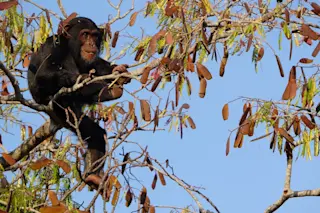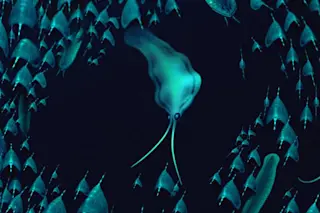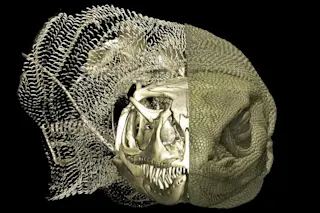[This article originally appeared in print as "Bugged By Design."]
The wing of a butterfly, the web of a spider, the knee of a flea — no, it’s not a medieval recipe for witch’s brew. It’s a short list of the growing number of insect attributes attracting notice for their core utility and ingenious design. From rendering crystal-clear images on screens no matter what the lighting to finding water in the desert, bug-inspired innovation is taking flight. –Gemma Tarlach
The Butterfly’s Crystalline Color

The Mirasol screen mimics the structure of butterfly wings to make e-reader and tablet displays easier to see while using less power. Thinkstock; Qualcomm
The brilliant colors on the wings of many butterflies and some bird feathers, such as peacocks, are not, in fact, due to any actual pigment in the wing material itself. Instead, color is created through the prism-like, crystalline structure of the surface. The light is split into its various bands of color and reflected to the eye of the observer, in much the same way as the perception of a rainbow.
Qualcomm, a publically traded wireless technology company, copied the butterfly effect in its Mirasol and IMod displays. The same layered structures that give a butterfly’s wings such vibrancy were used to create an “always on” effect without draining energy for backlighting.
Because these screens rely on ambient light rather than illumination, colors intensify outdoors, unlike traditional screens that are washed out by daylight. Since the screens don’t generate light, they also require about 90 percent less power to operate. If the technology were applied to plasma television screens, for example, which use about 400 watts to run, a Mirasol screen would potentially use only 40 watts. Mirasol technology has already been applied to cellular phones and other user interface devices.
The Spider’s Reflective Web
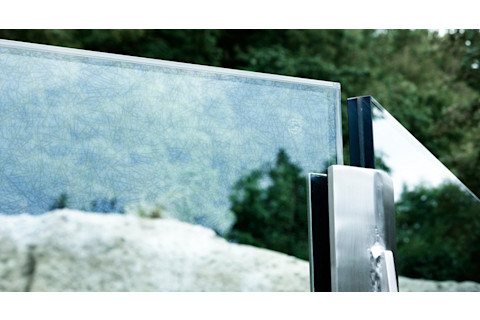
The spiderweb-inspired pattern on Ornilux glass helps birds see the solid surface and avoid collisions. Arnold Glas
It’s been calculated that 100 million birds or more die every year from impacts with glass windows — particularly large office buildings or skyscrapers. Did you ever wonder how birds avoid spiderwebs? It so happens that spiderwebs reflect ultraviolet light — and unlike us, birds can see ultraviolet light reflections.
I guess spiders don’t want to bite off more than they can chew — and by creating a seemingly solid object from a bird’s-eye view, they also save time by not having to rebuild smashed webs. This clever strategy is not lost on a German company, Glaswerke Arnold. Researchers there have developed the award-winning Ornilux Bird Protection Glass.
Embedded in their glass sheet is a chaotic pattern of UV-reflecting strands. Almost invisible to the human eye, to a bird it looks like an impenetrable barrier. Bird strikes are down by more than 75 percent in buildings that use the Ornilux product.
The Desert Beetle’s Water Source
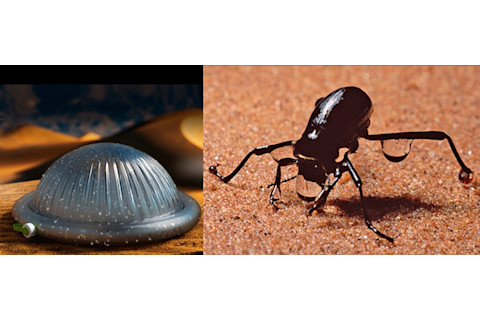
The Dew Bank, which collects and stores condensation, was inspired by the darkling beetle. Yanko Design; Michael and Patricia Fogden/Minden Pictures
One bug has worked out how to catch and drink morning fog in one of the driest places on Earth. The bodies of the Namib Desert darkling beetle species are covered with little bumps, about twice the thickness of a human hair, while the shell itself is covered with a waxy substance that is highly hydrophobic (repels water).
This little fellow sticks his butt in the morning air, so that minute water droplets are attracted to the bumps and then run down his back and into his mouth. Designer Kitae Pak has created an award-winning biomimetic device based on the beetle’s strategy. Made of stainless steel, the beetle-back-shaped dome collects drops of fog and runs them into a circular reservoir for later consumption. This could potentially provide enough water per day for survival of Namib Desert people.
The Flea’s Jumping Joints

Fleas get their impressive athletic abilities as high-jumpers and long-jumpers from pads in their joints made of resilin (highlighted in blue in inset photo). Right, a rod of synthetic resilin is illuminated by ultraviolet light. Whether natural or lab-made, resilin is the most efficient elastic protein known. CSIRO
“The bee’s knees” was flapper slang from the 1920s to describe something considered excellent. The Australian government research group CSIRO has found that fleas’ knees are pretty excellent, too.
CSIRO has manufactured a near-perfect rubber with a 98 percent level of resiliency. Their scientists did this by studying resilin, a protein that makes up the joints of many insects, including fleas’.
Think of resilin as a type of spring, which can absorb force or pressure and then release that stored energy again when the pressure is lifted. Resilin’s efficiency is dramatically higher than synthetic rubber or rubber harvested from trees.
It allows fleas to store enough kinetic energy to leap 100 times their body length in a single bound. (The human equivalent would be about 600 feet high, giving new meaning to the expression, “the joint’s jumping.”) It’s the most efficient elastic protein known, and its synthesized form could be used to improve everything from the responsiveness of heart valves to the bounciness of running shoes.
Adapted from The Shark’s Paintbrush by Jay Harman. Copyright © 2013 by Jay Harman. Published by arrangement with White Cloud Press.










